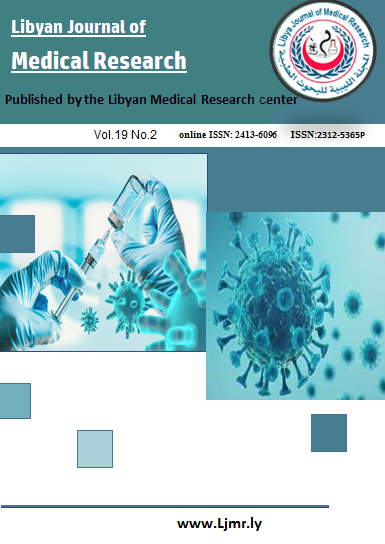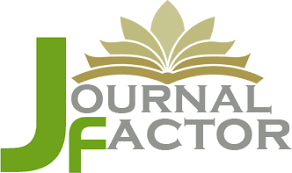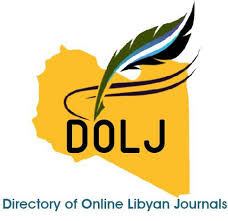Development of Physical Therapy for Hand Neuro-Rehabilitation by Mechatronics
DOI:
https://doi.org/10.54361/LJMR.19.2.07Keywords:
Physical Therapy, Hand Neuro-Rehabilitation, Mechatronics, Biomedical RoboticsAbstract
Background: One of the basic matters of communication in our daily life is interaction and communication with others. So, Communication is very important in the life of all human beings alike. The problem begins with the hands-on rehabilitation to restore function, improve movement, and alleviate pain and spasms in individuals with hand impairments, as they face many problems in expressing their feelings and communication to others. Objective: The article aims to developed a new designing for Hand rehabilitation to restore function, improve movement, and alleviate pain and spasms in individuals with hand impairments. Materials and Methods: The traditional rehabilitation methods often require specialized equipment and clinic visits. The article has proposed a novel design, with low-cost, and portable wearable rehabilitation glove designed to enhance hand functions. The glove is custom-made for each individual by measuring finger joint angles, with personalized rings printed using 3D printing technology. Servo motors are connected to Kevlar yarn to assist in finger movement, enabling users to perform repetitive rehabilitation exercises. Conclusion: Through the implementation of this work, it is possible to know the extent of the importance of the various sensors and control systems and their relationship to facilitating our lives and solving some complex and different problems. The glove demonstrated the ability to facilitate the flexion and extension movements of the fingers, supporting hand training. Based on the findings, it is clear that while the glove shows promise in its intended function, further refinement of the sensor calibration and the glove’s design is necessary to minimize interference and ensure more reliable data collection.
Downloads
References
1. Proulx, C. E., Higgins, J., & Gagnon, D. H. (2023). Occupational therapists’ evaluation of the perceived usability and utility of wearable soft robotic exoskeleton gloves for hand function rehabilitation following a stroke. Disability and Rehabilitation: Assistive Technology, 18(6), 953-962.
2. Yamakawa, I., Yamada, A., Sonoda, Y., Wakita, K., Nishioka, T., Harada, Y., Urushitani, M. (2023). Occupational therapy using a robotic-assisted glove ameliorates finger dexterity and modulates functional connectivity in amyotrophic lateral sclerosis. Journal of Clinical Neuroscience, 107, 144-149.
3. Anmoto, N., Takebayashi, T., Okita, Y., Ishigaki, M., Hibino, S., & Hanada, K. (2023). Effectiveness of combining robotic therapy and modified constraint-induced movement therapy for moderate to severe upper limb paresis after stroke in subacute phase: Case–control study by propensity score analysis. British Journal of Occupational Therapy, 86(2), 149-157.
4. Legg, L., Drummond, A., Leonardi-Bee, J., Gladman, J. R. F., Corr, S., Donkervoort, M., Langhorne, P. (2007). Occupational therapy for patients with problems in personal activities of daily living after stroke: systematic review of randomised trials. Bmj, 335(7626), 922.
5. Guerrero, R. (2015). Low-cost Rigid-frame Exoskeleton Glove with Finger-joint Flexion Tracking Mapped onto a Robotic Hand (Doctoral dissertation), pp 49-50.
6. Maciejasz, P., Eschweiler, J., Gerlach-Hahn, K., Jansen-Toy, L., & Leonhardt, S. (2014). A survey on robotic devices for upper limb rehabilitation. Journal of Neuro Engineering and Rehabilitation, 11(1), 3. https://doi.org/10.1186/1743-0003-11-3.
7. Polygerinos, P., Galloway, K. C., Sanan, S., Herman, M., & Walsh, C. J. (2015). EMG controlled soft robotic glove for assistance during activities of daily living. 2015 IEEE International Conference on Rehabilitation Robotics (ICORR). https://doi.org/10.1109/ICORR.2015.72812471.
8. Balasubramanian, S., Klein, J., & Burdet, E. (2010). Robot-assisted rehabilitation of hand function. Current Opinion in Neurology, 23(6), 661–670. https://doi.org/10.1097/WCO.0b013e3283402f381.
9. Heo, P., Gu, G. M., Lee, S. J., Rhee, K., & Kim, J. (2012). Current hand exoskeleton technologies for rehabilitation and assistive engineering. International Journal of Precision Engineering and Manufacturing, 13(5), 807–824. https://doi.org/10.1007/s12541-012-0107-2.
10. Brokaw, E. B., Murray, T., Nef, T., & Lum, P. S. (2011). Retraining of interjoint arm coordination after stroke using a novel robotic device. Journal of Neuro Engineering and Rehabilitation, 8, 13. https://doi.org/10.1186/1743-0003-8-13.
11. Duret, C., Grosmaire, A. G., & Krebs, H. I. (2019). Robot-assisted therapy in upper extremity hemiparesis: overview of an evidence-based approach. Frontiers in Neurology, 10, 412. https://doi.org/10.3389/fneur.2019.00412.
12. Ang, K. K., Guan, C., Phua, K. S., Wang, C., Zhou, L., Tang, K. Y., ... & Kuah, C. W. (2014). Brain-computer interface-based robotic end effector system for wrist and hand rehabilitation: results of a three-armed randomized controlled trial for chronic stroke. Frontiers in Neuro Engineering, 7, 30. https://doi.org/10.3389/fneng.2014.00030.
13. Lu, E. C., Wang, R. H., Hebert, D., Boger, J., Galea, M., Mihailidis, A., & Stinton, S. (2011). The development of an upper limb stroke rehabilitation robot: Identification of clinical practices and design requirements through a survey of therapists. Disability and Rehabilitation: Assistive Technology, 6(5), 420–431. https://doi.org/10.3109/17483107.2010.542570.
14. Kiguchi, K., & Hayashi, Y. (2012). An EMG-based control for an upper-limb power-assist exoskeleton robot. IEEE Transactions on Systems, Man, and Cybernetics, Part B (Cybernetics), 42(4), 1064–1071. https://doi.org/10.1109/TSMCB.2012.2185843.
15. Song, R., Tong, K. Y., Hu, X., Li, L., & Sun, R. (2008). Interactive training system for hand function recovery of stroke patients using virtual reality and force-feedback technology. Journal of Neuro Engineering and Rehabilitation, 5, 16. https://doi.org/10.1186/1743-0003-5-16.
16. Jarrassé, N., Proietti, T., Crocher, V., Robertson, J., Sahbani, A., Morel, G., & Roby-Brami, A. (2014). Robotic exoskeletons: a perspective for the rehabilitation of arm coordination in stroke patients. Frontiers in Human Neuroscience, 8, 947. https://doi.org/10.3389/fnhum.2014.00947.
17. Cappello, L., Meyer, J. T., Galloway, K. C., Peisner, J. D., Granberry, R., & Walsh, C. J. (2018). Assisting hand function after spinal cord injury with a fabric-based soft robotic glove. Journal of Neuro Engineering and Rehabilitation, 15, 59. https://doi.org/10.1186/s12984-018-0405-01.
18. Park, E. J., Lee, H., & Choi, Y. (2016). Functional evaluation of soft wearable robot for the hand with semi-active tendons. IEEE Transactions on Neural Systems and Rehabilitation Engineering, 24(1), 30–38. https://doi.org/10.1109/TNSRE.2015.2409891
19. Reinkensmeyer, D. J., Emken, J. L., & Cramer, S. C. (2004). Robotics, motor learning, and neurologic recovery. Annual Review of Biomedical Engineering, 6, 497–525. https://doi.org/10.1146/annurev.bioeng.6.040803.140223.
20. Zhang, F., He, W., & Ge, S. S. (2016). Adaptive control of a rehabilitation robot with dynamic uncertainties and input constraints. IEEE Transactions on Industrial Electronics, 63(2), 1093–1104. https://doi.org/10.1109/TIE.2015.2478843.
21. Taheri, H., Rowe, J. B., Gardner, D., Chan, V., Gray, K., Bower, C., ... & Reinkensmeyer, D. J. (2014). Design and preliminary evaluation of the FINGER rehabilitation robot: controlling challenge and quantifying finger individuation during musical computer game play. Journal of Neuro Engineering and Rehabilitation, 11, 10. https://doi.org/10.1186/1743-0003-11-10.
22. Takahashi, C. D., Der-Yeghiaian, L., Le, V. H., & Cramer, S. C. (2008). A robotic device for hand motor therapy after stroke. Proceedings of the IEEE 10th International Conference on Rehabilitation Robotics, 17–20. https://doi.org/10.1109/ICORR.2007.4428446.
23. Gasser, B. W., Goldfarb, M., & Hartigan, C. (2005). A robotic exoskeleton for rehabilitation and mobility enhancement of persons with neuromuscular disabilities. Proceedings of the 2005 IEEE Engineering in Medicine and Biology 27th Annual Conference, 5245–5248. https://doi.org/10.1109/IEMBS.2005.1615699.
24. Colombo, R., Pisano, F., Mazzone, A., Delconte, C., Micera, S., Carrozza, M. C., & Minuco, G. (2007). Robotic techniques for upper limb evaluation and rehabilitation of stroke patients. IEEE Transactions on Neural Systems and Rehabilitation Engineering, 13(3), 311–324. https://doi.org/10.1109/TNSRE.2005.848705.
Downloads
Published
Issue
Section
License
Copyright (c) 2025 Ahmed M. Garad , Mohamed .A . Gabbasa (Author)

This work is licensed under a Creative Commons Attribution-NonCommercial-NoDerivatives 4.0 International License.
Open Access Policy
Libyan journal of medical Research (LJMR).is an open journal, therefore there are no fees required for downloading any publication from the journal website by authors, readers, and institution.
The journal applies the license of CC BY (a Creative Commons Attribution 4.0 International license). This license allows authors to keep ownership f the copyright of their papers. But this license permits any user to download , print out, extract, reuse, archive, and distribute the article, so long as appropriate credit is given to the authors and the source of the work.
The license ensures that the article will be available as widely as possible and that the article can be included in any scientific archive.
Editorial Policy
The publication of an article in a peer reviewed journal is an essential model for Libyan journal of medical Research (LJMR). It is necessary to agree upon standards of expected ethical behavior for all parties involved in the act of publishing: the author, the journal editorial, the peer reviewer and the publisher.
Any manuscript or substantial parts of it, submitted to the journal must not be under consideration by any other journal. In general, the manuscript should not have already been published in any journal or other citable form, although it may have been deposited on a preprint server. Authors are required to ensure that no material submitted as part of a manuscript infringes existing copyrights, or the rights of a third party.
Authorship Policy
The manuscript authorship should be limited to those who have made a significant contribution and intellectual input to the research submitted to the journal, including design, performance, interpretation of the reported study, and writing the manuscript. All those who have made significant contributions should be listed as co-authors.
Others who have participated in certain substantive aspects of the manuscript but without intellectual input should only be recognized in the acknowledgements section of the manuscript. Also, one of the authors should be selected as the corresponding author to communicate with the journal and approve the final version of the manuscript for publication in the LJMR.
Peer-review Policy
- All the manuscripts submitted to LJMR will be subjected to the double-blinded peer-review process;
- The manuscript will be reviewed by two suitable experts in the respective subject area.
- Reports of all the reviewers will be considered while deciding on acceptance/revision or rejection of a manuscript.
- Editor-In-Chief will make the final decision, based on the reviewer’s comments.
- Editor-In-Chief can ask one or more advisory board members for their suggestions upon a manuscript, before making the final decision.
- Associate editor and review editors provide administrative support to maintain the integrity of the peer-review process.
- In case, authors challenge the editor’s negative decision with suitable arguments, the manuscript can be sent to one more reviewer and the final decision will be made based upon his recommendations.












